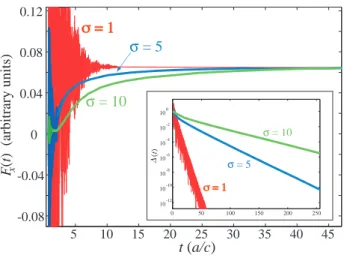Casimir forces in the time domain: I. Theory
Texte intégral
Figure



Documents relatifs
10th International Congress on Advanced Electromagnetic Materials in Microwaves and Optics - Metamaterials 2016 Crete, Greece, 17-22 September 2016.. Homogenization of sound
In the next section, we formulate the direct and inverse scattering problem for the wave equation with a Dirchlet obstacle, and define the concept of the far field pattern for
However, considering the energy gap between the configurations where the plates are either at finite distance, or infinite distance, the field theory and string theory outcomes are
Panel D of figure 5 shows the original envelope of an auditory filter, this signal low-pass filtered (the cut-off point being 16 Hz), and the waveforms generated by using both
A direct computation of the average force per unit surface yields, at large distance, the usual form of the Casimir force in the classical limit up to a factor 2 due to the fact
We have proposed a novel experiment to measure the interaction between an atom and a macroscopic surface at short distances based on the existing technology of optical lattice
Its simplicity stems from the fact that it treats directly the impinging waves on each node of a lattice and describes the scattering event, in the time domain, by a scattering
Let the atoms be in a magnetic field of a few gauss, 10 G for example, sufficient to separate the Zeeman levels by more than their natural width (about I MHz) ; the fluorescent